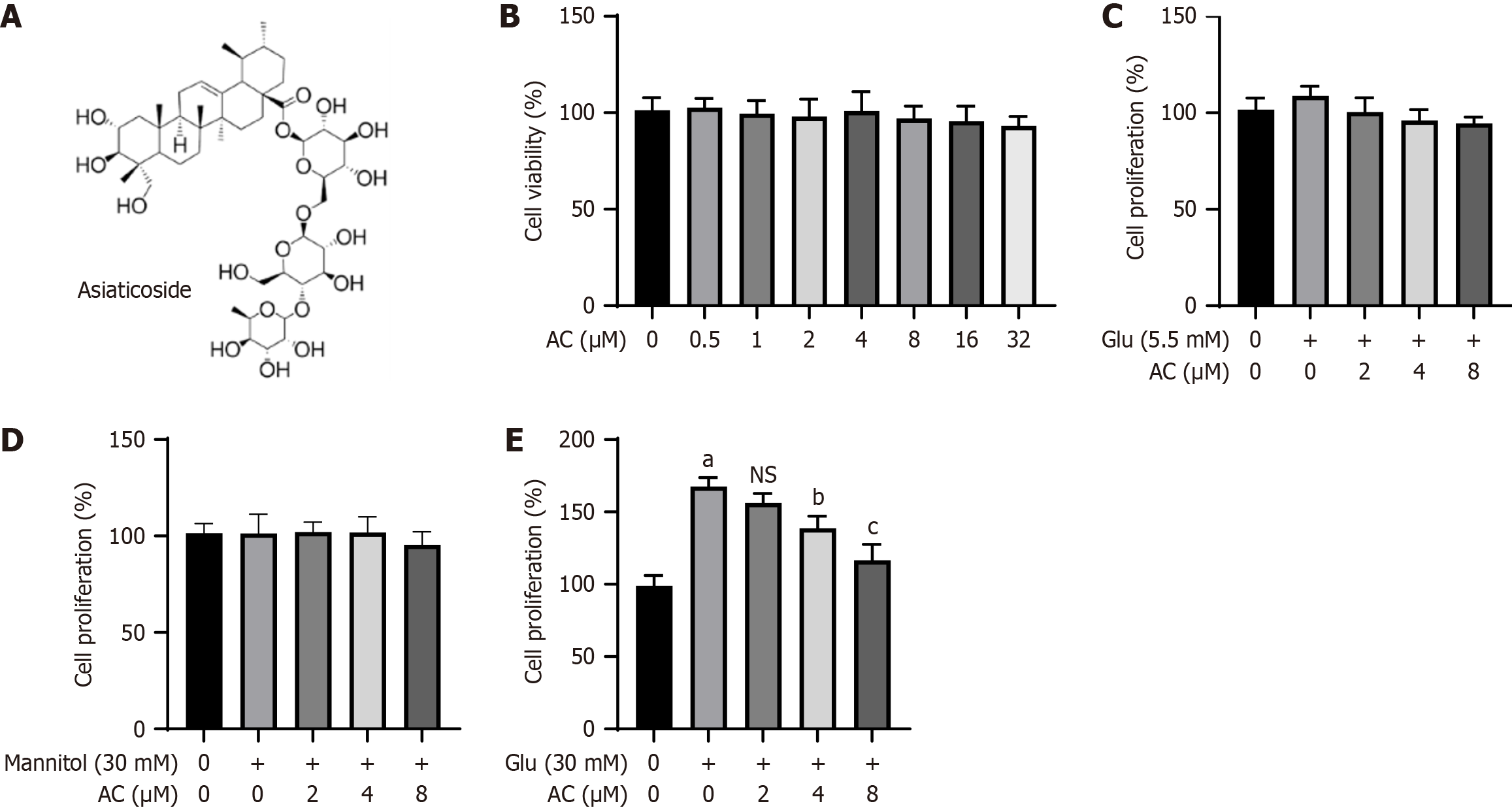Copyright
©The Author(s) 2024.
World J Diabetes. Oct 15, 2024; 15(10): 2111-2122
Published online Oct 15, 2024. doi: 10.4239/wjd.v15.i10.2111
Published online Oct 15, 2024. doi: 10.4239/wjd.v15.i10.2111
Figure 1 Effect of asiaticoside on high glucose-induced proliferation of rat glomerular mesangial cells.
A: Chemical structure of asiaticoside (AC); B: Viability of rat glomerular mesangial cells (HBZY-1) treated with AC at different concentrations (0, 0.5, 1.0, 2.0, 4.0, 8.0, 16.0, and 32.0 μM) for 24 h detected by Cell Counting Kit-8 (CCK-8) assay; C: Proliferation levels of HBZY-1 cells after co-treatment of AC at different concentrations (0, 2, 4, and 8 μM) and glucose (5.5 mmol/L) for 48 h detected by CCK-8 assay; D: Proliferation of HBZY-1 cells after co-treatment of AC treatment at different concentrations (0, 2, 4, and 8 μM) and mannitol (30 mmol/L) detected by CCK-8 assay; E: Proliferation of HBZY-1 cells treated with AC at different concentrations (0, 2, 4, and 8 μM) and glucose (30 mmol/L) detected by CCK-8 assay. n = 3 experiments. aP < 0.001 vs control, bP < 0.01, and cP < 0.001 vs (Glu, 30 mmol/L + AC, 0 µM); not significant (P > 0.05) vs (Glu, 30 mmol/L + AC 0 µM). AC: Asiaticoside; Glu: Glucose; NS: Not significant.
- Citation: Zhuang LG, Zhang R, Jin GX, Pei XY, Wang Q, Ge XX. Asiaticoside improves diabetic nephropathy by reducing inflammation, oxidative stress, and fibrosis: An in vitro and in vivo study. World J Diabetes 2024; 15(10): 2111-2122
- URL: https://www.wjgnet.com/1948-9358/full/v15/i10/2111.htm
- DOI: https://dx.doi.org/10.4239/wjd.v15.i10.2111









